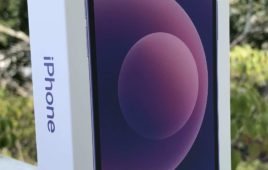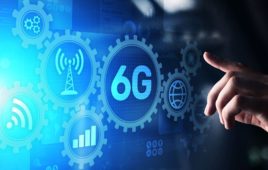Snapchat. Facebook. Instagram. And, of course, the old standby: texting.
As the demand for wireless data continues to skyrocket, it increasingly seems that cell phones are used less and less frequently for what they were originally made for – talking.
Further, it seems that millennial users wouldn’t miss their voice capabilities all that much.
According to a new survey from mobile engagement company OpenMarket, a whopping 75 percent of millennials chose texting over talking when given the choice between giving up one of the two. Additionally, three-quarters of millennials said they think receiving texts – rather than the traditional calls – for appointments, deliveries, payments, promotions and surveys are helpful reminders.
But why is texting and other data messaging so popular among the younger generations? The survey found 63 percent of millennials said they prefer texts because they’re less disruptive than a voice call, 53 percent said they simply prefer texting to voice calling for communication in general and 19 percent said they prefer texts because they never check their voicemails. Overall, 76 percent of millennials said texts are less invasive than other forms of messaging.
This overwhelming aversion to voice begs the question: could millennials bring cord cutting to wireless?
It started with pay TV
In the pay TV world, millennials have been driving the cord cutting trend – that is, a movement away from traditional pay TV service packages with superfluous offerings in favor of flexible video streaming services. According to a recent study from the Consumer Technology Association (CTA), 62 percent of millennials choose paid video streaming services as their content source, whereas 71 percent of individuals age 35 and over choose traditional service providers.
While part of the cord cutting trend in pay TV can be attributed to the millennial desire to access content on the go – with 57 percent expressing a preference for watching streamed content on their computer, tablet or smartphone – the other part of the equation is frugality. According to the CTA study, nearly a third of consumers who said they haven’t had a service subscription for more than a year indicated their TV-watching habits didn’t justify the cost of maintaining a subscription.
As the voice-apathetic (or, at worst, averse) millennial generation ages and becomes the primary force in the market, it not too much of a stretch of the imagination to see that trend making the jump to wireless. Additionally, voice over IP services provided by applications like Skype and Whatsapp would make the transition nearly painless.
In fact, there’s already an option out there for early adopters of wireless cord cutting: T-Mobile’s Simple Choice Data Only option.
Though the option has historically been geared toward consumers who are deaf or hard of hearing, the plan could find popularity with a millennial base. While it hasn’t advertised the plan to the masses, T-Mobile recently updated the offering to include six data tiers ranging from 2 GB for $20 per month to 22 GB for $95 per month. And, of course, the plans include unlimited amounts of texting – a millennial favorite.
Is voice really dead, or even dying?
According to Sergio Zveibil, product marketing manager at communications infrastructure optimization company InfoVista, voice isn’t dead, it’s in the middle of a makeover.
Though data is undoubtedly driving today’s network investments, Zveibil said voice services still account for about half of the worldwide mobile revenue. But, Zveibil said, voice is currently in the midst of a shift to becoming a data-based offering.
“Actually, what’s going on is voice is going to be come data,” Zveibil said. “Technically speaking, everything will become IP-based as we move from 4G to 5G.”
While he believes voice services will increasingly become a data-based service, Zveibil said he doesn’t think data-only plans will take off. The change, he said, will just be absorbed into the traditional bundle voice-text-data bundle.
I’m less convinced.
In Sweden, TeliaSonera already has more than 40 percent of its wireless customer base on a data-centric plan.
The rise of U.S. millennials to positions of purchasing power combined with the increasing prevalence of VoIP services and video streaming could just create a perfect storm that pushes consumers to cut the wireless cord.
Data-only world, here we come.




